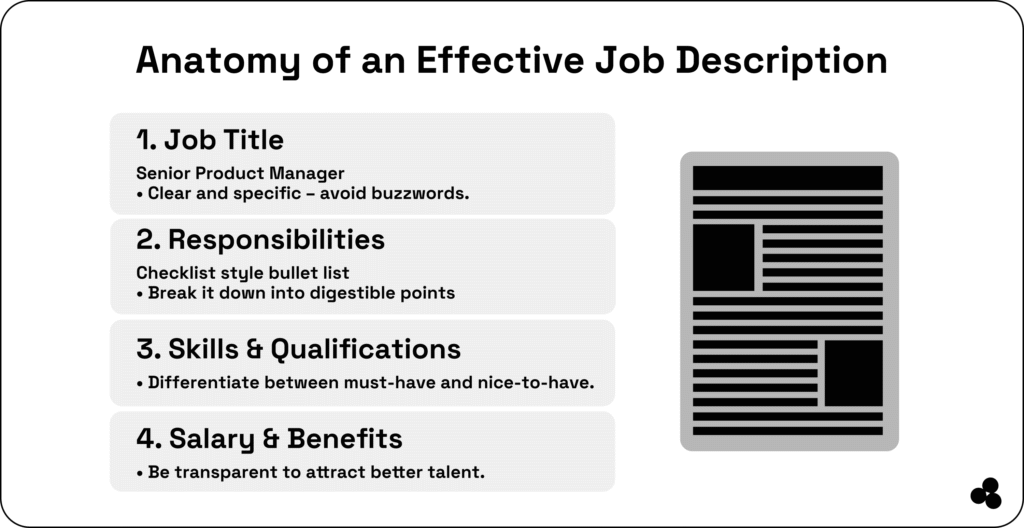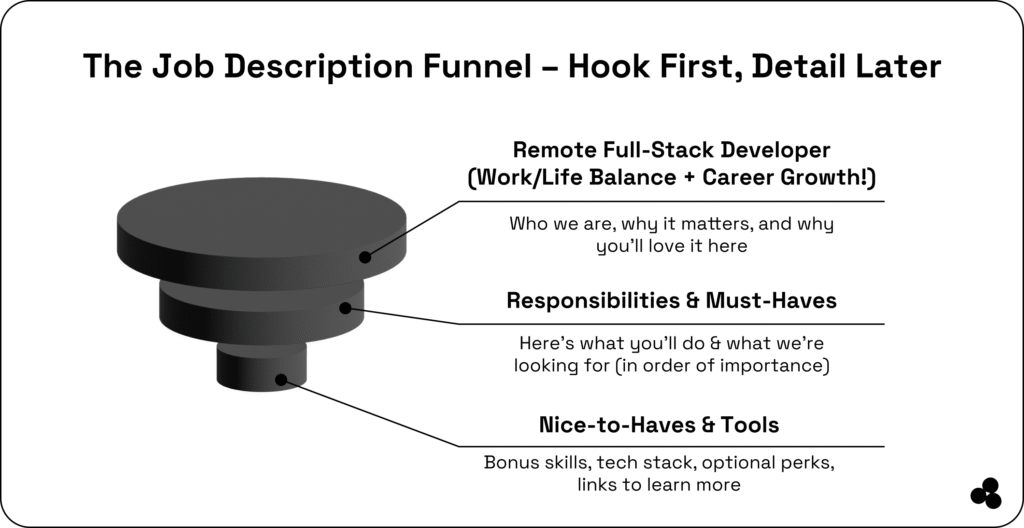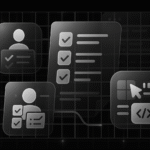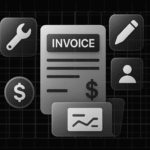Have you ever struggled to attract the right candidates? In that case, your job descriptions might be the missing link.
In today’s competitive hiring landscape, writing job descriptions that are clear, engaging, and inclusive is essential to finding — and keeping — top talent.
A great job description doesn’t just list tasks; it clearly outlines the responsibilities and expectations that come with the role. It tells a story — who you are as a company, what you value, and why someone should want to join your mission.
💡 Quick Takeaway: Writing a great job description is about clarity, inclusivity, and structure. It defines expectations, highlights growth, and draws in people who align with your vision.
Why Writing Job Descriptions Matters
Your job descriptions are more than a hiring formality; they’re your first impression with potential employees. A clear and compelling description can:
- Save hours during the hiring process
- Attract better-quality applicants
- Reduce turnover rates
According to BGSU’s HR department, a well-written job description defines essential duties, required skills, and the position’s role in achieving company goals.
✍️ Tip: Job descriptions also act as performance guides, helping both employees and managers measure success.
💬 What are the key elements of a good job description? A solid job description includes a clear title, an overview, detailed responsibilities, specific qualifications, and highlights of the company culture. It should also include work type (remote, hybrid, or on-site) and compensation transparency.
For more insights on structured writing that improves readability, explore A Beginner’s Guide to Structured Content.

11 Expert Tips for Writing Job Descriptions That Attract Top Talent
1. Start With a Clear Job Title
Keep your job titles simple, searchable, and accurate.
- Good: “Marketing Manager”
- Avoid: “Marketing Rockstar” or “Growth Guru”
A straightforward title helps candidates find your listing faster and ensures it appears in job board searches.
💬 Should I include seniority levels like “Junior” or “Senior”? Yes, when relevant. It helps applicants understand expectations and apply appropriately.
2. Write an Engaging Summary
Your opening paragraph should quickly answer:
- Who you are
- What the role is about
- Why it matters
Think of it as your “elevator pitch” to potential employees. This section sets the tone for your company culture — one that is friendly, ambitious, and people-focused.
Learn more about improving your writing flow in Tips to Become a More Productive Writer.
3. List Key Responsibilities Clearly
Keep it organized by using bullet points (6–8 max) to describe daily tasks and long-term goals.
Example:
- Manage internal communications between marketing and sales teams.
- Track performance metrics using CRM tools.
- Support campaign planning and execution.
💬 How long should a job description be? Aim for 400–800 words. Long enough to provide detail, short enough to hold attention.
4. Define Required and Preferred Qualifications
Differentiate between what’s essential and what’s nice to have.
Example:
- Required: Bachelor’s degree in marketing or equivalent experience
- Preferred: Familiarity with HubSpot or Salesforce
This distinction helps avoid discouraging qualified applicants who may not meet every “preferred” requirement.
Check out Microapp for innovative tools that simplify documentation and collaboration.
5. Showcase Your Company Culture
Your company’s mission, values, and benefits are often the dealmakers. Talk about your team environment, flexibility, and growth mindset — candidates want to know what life is like behind the job title.
Example:
“At Microapp, we believe creativity thrives when teams are empowered to innovate. That’s why we offer flexible hours, growth budgets, and a collaborative culture.”
6. Include Compensation Transparently
Being upfront about pay and benefits boosts trust. List salary ranges, bonuses, or performance incentives.
💬 Should I include salary in every job description? Yes, when possible. Transparency attracts better candidates and saves time during the screening process.
7. Use Inclusive, Neutral Language
Avoid biased words like “ninja,” “dominant,” or “aggressive.” Instead, focus on skills, collaboration, and potential.
💡 Tip: Use AI writing tools like Job Description AI to check for bias and improve inclusivity.
Curious about the differences between human and AI writing? See our guide: AI Writing vs. Traditional Writing.
8. Add Relevant Keywords
Job descriptions should be searchable both on your site and platforms like Indeed or LinkedIn.
Example keywords:
- “Remote project manager”
- “Customer success lead”
- “Full-stack developer (React + Node.js)”
This simple step boosts your organic visibility.
💬 How often should I update my job descriptions? Review them every 6–12 months or after a major company change.
9. Clarify Work Type and Schedule
Remote? Hybrid? On-site? Be specific.
Include details like:
- Expected working hours
- Flexibility
- Travel requirements
Clear expectations = fewer misunderstandings later.
10. Highlight Career Growth Opportunities
Show applicants how they’ll grow with you.
Example:
“You’ll lead a small team and collaborate with senior leadership to shape our next product launch.”
Check out the Pros and Cons of AI-Generated Content
11. End With a Strong Call to Action
Wrap up with clarity and motivation.
Example:
“Ready to grow your career with a team that values innovation? Apply now — we’d love to meet you!”
For faster hiring content creation, try our Job Description AI Tool, designed to generate structured, inclusive, and keyword-rich listings.

Avoid These Common Mistakes in Writing Job Descriptions
Now that you know how to write a great job description, there are some mistakes you should avoid:
- Using Euphemisms, things like having a positive attitude and being enthusiastic do not belong on your list of requirements.
- Avoid describing your ideal candidate, as there is no such thing as a perfect candidate. Describe only the minimum profile. Even if you are looking for someone with four years of experience, never write four in your requirements.
- Do not write unrealistic expectations when describing the position needed.
- Never ask for things a candidate cannot self-assess. Instead, use objective criteria in your proxy by asking things your candidate can understand.
- Do not hesitate to ask directly to ensure that your chosen candidate matches the job requirements.

Write Smarter, Hire Better
A job description isn’t just text; it’s the foundation of your hiring success. By writing with clarity, purpose, and inclusivity, you’ll attract candidates who genuinely fit your company culture.
✨ Your next great hire starts with one clear, authentic job description.
Explore Microapp for tools and AI-powered features that simplify job description creation, streamline workflows, and help your business grow smarter.








